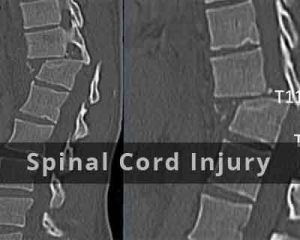- Home
- Editorial
- News
- Practice Guidelines
- Anesthesiology Guidelines
- Cancer Guidelines
- Cardiac Sciences Guidelines
- Critical Care Guidelines
- Dentistry Guidelines
- Dermatology Guidelines
- Diabetes and Endo Guidelines
- Diagnostics Guidelines
- ENT Guidelines
- Featured Practice Guidelines
- Gastroenterology Guidelines
- Geriatrics Guidelines
- Medicine Guidelines
- Nephrology Guidelines
- Neurosciences Guidelines
- Obs and Gynae Guidelines
- Ophthalmology Guidelines
- Orthopaedics Guidelines
- Paediatrics Guidelines
- Psychiatry Guidelines
- Pulmonology Guidelines
- Radiology Guidelines
- Surgery Guidelines
- Urology Guidelines
Spinal cord injury affects the heart

Spinal cord injury affects the heart, that's what research published in Experimental Physiology and carried out by researchers from the University of British Columbia, Canada has found.
The heart undergoes changes after spinal cord injury that is dependent on how severe the spinal cord injury is but only a small amount of "sparing" (i.e., a small number of nerve fibers preserved) in the spinal cord are necessary for the heart to function at a near normal level.
This research has important clinical implications as one of the primary aims of spinal cord injury management is to reduce the amount of damage that happens after the initial trauma. This exacerbation of the primary injury is termed the "secondary injury", and is driven by complex cellular processes that eventually result in the 'size' of the injury enlarging and therefore damaging more nerve fibres. These findings imply that if more nerve fibers can be preserved following spinal cord injury (for example by reducing the extent of the secondary injury), then there could be improvements in how the heart functions. This is important as individuals with spinal cord injury are at a much higher risk for heart disease than people without spinal cord injury.
The research was carried out by comparing two different severities of spinal cord injury in a clinically-relevant rodent model. This rodent model was used because it allowed the researchers to carefully control the amount of damage to the spinal cord during the injury and definitively assess heart function as well as examine how the cells in the heart change. Studies that enable the underlying mechanisms of heart function to be examined after spinal cord injury are simply not possible in humans but by closely mimicking the injuries that occur in humans the findings are more readily able to be transferred to humans.
For more details click on the link : http://dx.doi.org/10.1113/EP086549

Disclaimer: This site is primarily intended for healthcare professionals. Any content/information on this website does not replace the advice of medical and/or health professionals and should not be construed as medical/diagnostic advice/endorsement or prescription. Use of this site is subject to our terms of use, privacy policy, advertisement policy. © 2020 Minerva Medical Treatment Pvt Ltd